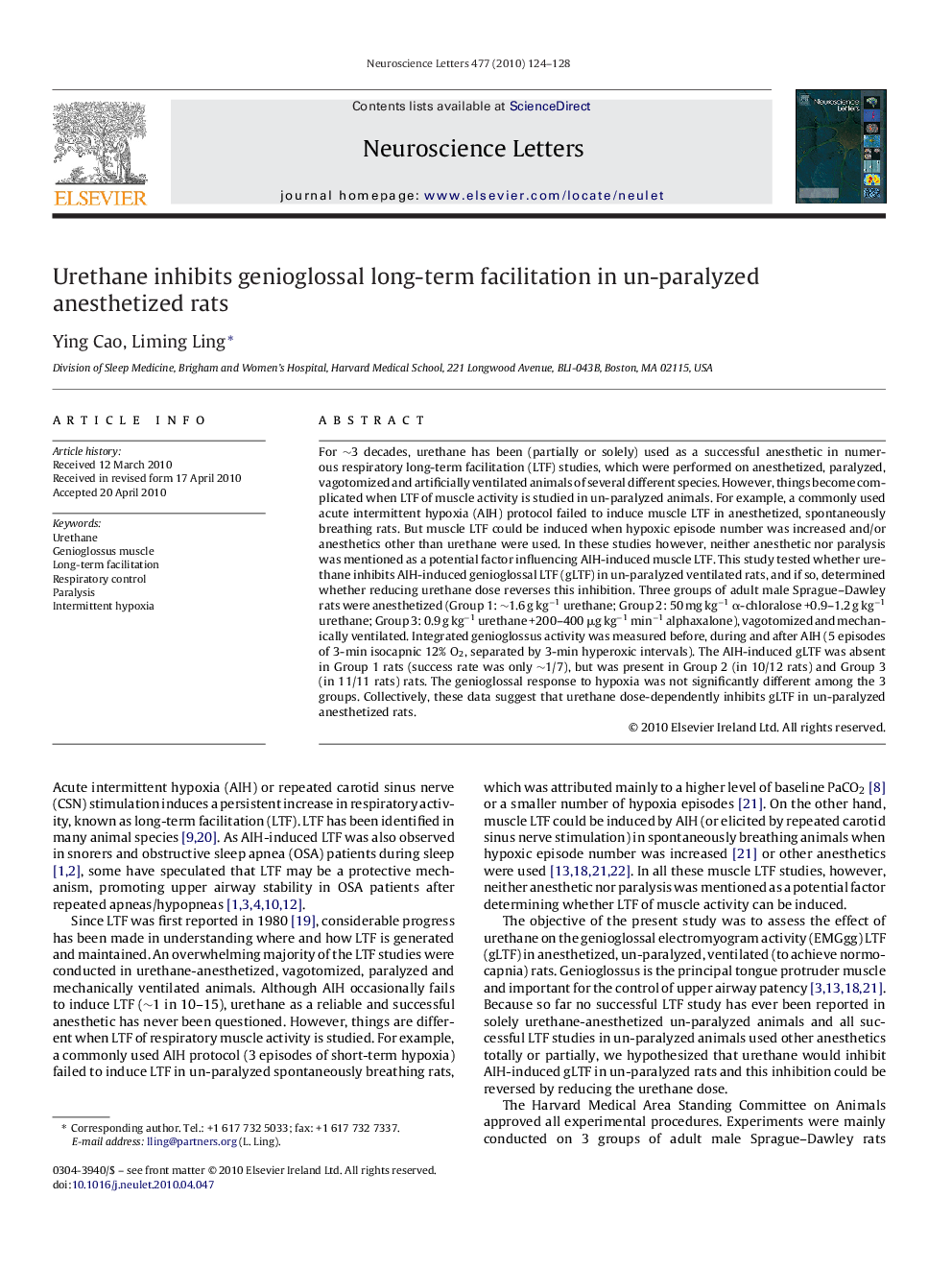| Article ID | Journal | Published Year | Pages | File Type |
|---|---|---|---|---|
| 4345867 | Neuroscience Letters | 2010 | 5 Pages |
For ∼3 decades, urethane has been (partially or solely) used as a successful anesthetic in numerous respiratory long-term facilitation (LTF) studies, which were performed on anesthetized, paralyzed, vagotomized and artificially ventilated animals of several different species. However, things become complicated when LTF of muscle activity is studied in un-paralyzed animals. For example, a commonly used acute intermittent hypoxia (AIH) protocol failed to induce muscle LTF in anesthetized, spontaneously breathing rats. But muscle LTF could be induced when hypoxic episode number was increased and/or anesthetics other than urethane were used. In these studies however, neither anesthetic nor paralysis was mentioned as a potential factor influencing AIH-induced muscle LTF. This study tested whether urethane inhibits AIH-induced genioglossal LTF (gLTF) in un-paralyzed ventilated rats, and if so, determined whether reducing urethane dose reverses this inhibition. Three groups of adult male Sprague–Dawley rats were anesthetized (Group 1: ∼1.6 g kg−1 urethane; Group 2: 50 mg kg−1 α-chloralose +0.9–1.2 g kg−1 urethane; Group 3: 0.9 g kg−1 urethane +200–400 μg kg−1 min−1 alphaxalone), vagotomized and mechanically ventilated. Integrated genioglossus activity was measured before, during and after AIH (5 episodes of 3-min isocapnic 12% O2, separated by 3-min hyperoxic intervals). The AIH-induced gLTF was absent in Group 1 rats (success rate was only ∼1/7), but was present in Group 2 (in 10/12 rats) and Group 3 (in 11/11 rats) rats. The genioglossal response to hypoxia was not significantly different among the 3 groups. Collectively, these data suggest that urethane dose-dependently inhibits gLTF in un-paralyzed anesthetized rats.
